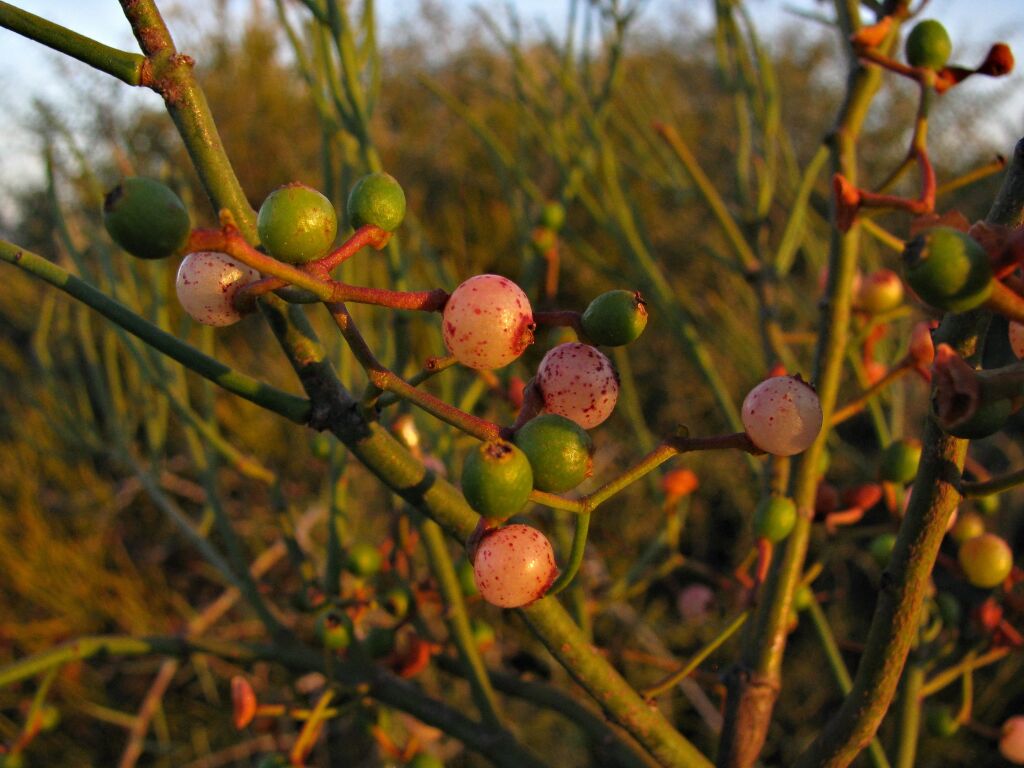Amyema preissii
(Miq.) Tiegh. Wire-leaf MistletoeErect or spreading shrubs, virtually glabrous. Leaves opposite or subopposite, terete, 2–8 cm long, 0.5–2.5 mm diam., apex acute or rounded, green, sessile. Inflorescence an umbel of triads, the central flower sessile; peduncles 5–26 mm long; rays of umbel usually 2, 3–13 mm long; pedicels of lateral flowers 4–10 mm long; bracts ovate, 1.5–2 mm long. Calyx entire or weakly toothed, limb to c. 0.2 mm long; corolla 4- or 5-merous, 18–26 mm long, red; anthers mostly 3–5 mm long, free part of filament c. equal to anther. Fruit globose, 8–10 mm long, white or pink. Flowers mainly Dec.–Apr.
LoM, MuM, Wim, GleP, VVP, RobP, MuF, GipP, OtP, WaP, Gold, CVU, GGr, DunT, OtR. Also WA, NT, SA, Qld, NSW. Widespread in western Victoria where found mostly on species of Acacia and occasionally on Senna.
Jeanes, J.A. (1999). Loranthaceae. In: Walsh, N.G.; Entwisle, T.J., Flora of Victoria Vol. 4, Cornaceae to Asteraceae, pp. 38–45. Inkata Press, Melbourne.
 Spinning
Spinning



